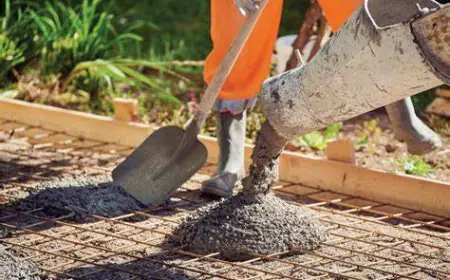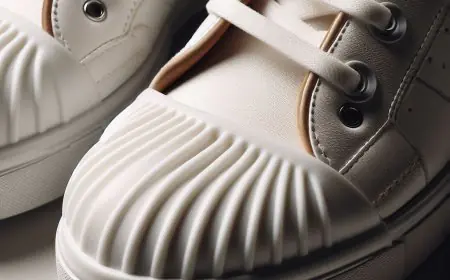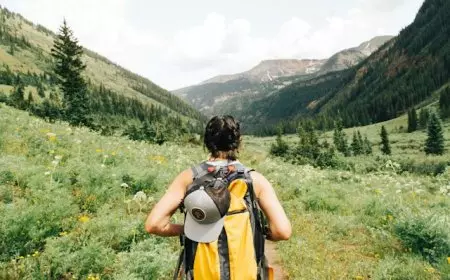How to Prevent Foot Pain After Hiking
Hiking is a wonderful way to explore nature and keep active, but foot discomfort may easily make your journey uncomfortable.

The beautiful outdoors, fitness, and environmental connection are all made possible through hiking. No matter your level of experience hiking, foot discomfort might make your outdoor experiences less enjoyable. Being miles from society and having hurting, blistered feet is the last thing you want. We'll examine practical methods to keep your feet pain-free and content throughout and after trekking in this detailed guide.
How to Understand Foot Pain While Hiking
It's critical to comprehend the causes of foot discomfort when hiking before we can discuss preventative measures.
1. Unsuitable shoes
A bad pair of hiking boots or shoes can cause discomfort and anguish. Blisters, hot areas, and even toenail damage can result from improperly fitted footwear. Selecting hiking shoes that are appropriate for your unique demands and the terrain you'll be exploring is crucial. When choosing your hiking boots or shoes, take into account the following:
• Fit: Make sure your hiking boots or shoes are comfortable to wear and have enough room for your toes. Your feet should have enough room to move without being overly loose.
• Support: Choose footwear that provides enough arch support and impact absorption. For enhanced comfort, insoles can be used.
• Waterproofing: To keep your feet dry and free of blisters when trekking, waterproof footwear may be a smart choice.
2. Inadequate Conditioning
For the difficulties of trekking, your feet must be ready. If you aren't used to taking lengthy treks or excursions, your feet may quickly get tired and hurting. Before starting increasingly difficult walks, it's critical to progressively train your feet. To help your feet get used to the strain of hiking, start with shorter walks and work your way up to longer trips.
3. Trail and Terrain Situations
Foot discomfort is greatly influenced by the sort of hiking terrain you are on. Long descents as well as uneven or rough slopes can tire your feet. 4. Overloading Your Backpack It's important to take trail conditions into account when planning your walks and to select footwear that offers the required support and protection.
A large backpack might interfere with your body's balance and posture, placing extra strain on your feet. It's crucial to limit your packing to the necessities and equally distribute the weight throughout your bag. You may improve balance and ease the strain on your feet by using waist and chest straps.
If you enjoy traveling and trekking, you probably have discomfort in your legs after hiking as well. To relieve this pain, try the medications Tydol 100mg and Noosanta 100mg, but always seek medical counsel first.
Tips to Avoid Foot Pain While Hiking
Let's now look at some doable preventative measures for foot discomfort during and after hiking.
1. Opt for the Correct Footwear
For comfortable feet, choosing the right shoes is essential. Keep in mind the following:
• Fit: Make sure your hiking boots or shoes are comfortable to wear and have enough room for your toes. Your feet should have enough room to move without being overly loose.
• Support: Choose footwear that provides enough arch support and impact absorption. For enhanced comfort, insoles can be used.
• Waterproofing: To keep your feet dry and free of blisters when trekking, waterproof footwear may be a smart choice.
2. Take Care of Your Feet
Your feet require conditioning just like the rest of your body. Start out with quick treks and gradually extend your distance. This enables your feet to adjust and acclimate to the strain of trekking.
3. Wear the Right Socks
Invest on a good pair of hiking socks. To keep your feet dry, look for fabrics that are moisture-wicking. Avoid wearing cotton socks since they have a tendency to retain moisture and cause blisters. Additionally, for additional protection, think about putting on a small liner sock under a heavier hiking sock.
4. Keep up good hygiene
When hiking, foot care is essential. Change your socks if they get wet and keep your feet dry and clean. Blisters can be avoided by carrying anti-chafing cream or foot powder.
5. Cut Your Nails
Long toenails may cause discomfort or even harm. To prevent ingrown nails or injury, trim your toenails before hitting the trail.
6. Practice Safe Hiking Techniques
Pay attention to how you walk and your stride. When walking down steep terrain, take fewer steps and aim to walk heel-to-toe. This lessens the strain on your feet and lowers the possibility of damage.
7. Take Control of Your Backpack Weight
Carry only what you really need to lighten your weight. Use your backpack's waist and chest straps to assist maintain balance while distributing the weight equally. Your feet will be less stressed if you are carrying less weight.
8. Remain still and flex
Take periodic rest breaks during your journey to stretch your ankles and feet. This can help ward against weariness and lower the likelihood of cramping.
9. Keep hydrated.
Muscle cramps and pain can result from dehydration. Make careful to stay hydrated both before and throughout your hike.
10. Discover Blister Care Techniques
On treks, blisters may be a regular pain. Carry blister-treatment supplies like tape, blister pads, or moleskin and learn how to use them properly. Blisters may act as natural bandages, so avoid popping them until absolutely essential.
Foot Care after a Hike
When you get at the trailhead, your trekking adventure is not over. Maintaining healthy, pain-free feet requires proper post-hike foot care.
1. Take off Your Boots
As soon as your hike is over, take off your boots to allow your feet to calm off and breathe. This aids in drying out the interior of your shoes as well.
2. Wash your feet
Cleanse your feet with warm water and light soap. Pay close attention to any sweaty or muddy spots on your body when hiking.
3. Look for wounds
Check your feet for any injuries or blisters. Treat any blisters or hot spots as soon as you see them to avoid infection.
4. Stand up Straight
Elevating your feet might assist circulation and minimize edema. After your hike, put your feet up on a pillow or cushion and unwind.
Conclusion
Hiking is a wonderful way to explore nature and keep active, but foot discomfort may easily make your journey uncomfortable. You may avoid foot discomfort during and after your hikes by paying attention to your feet and using the advice in this article. Remember that having happy, pain-free feet on the trail is possible with the correct footwear, proper conditioning, and decent cleanliness. So put on your boots, get out into the route, and remember to keep your feet happy at all times. Hiking is fun!
What's Your Reaction?

































































































